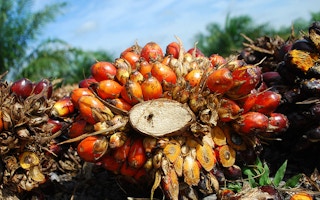Most of the attention paid to oil palm in Southeast Asia centers on big plantations set up by big companies, and it’s almost uniformly bad for the environment. But less information surfaces about the effects of small-scale oil palm, even as more people switch to farming this crop exclusively.
New research confirms that, as is often the case for large-scale oil palm, the move toward small-scale oil palm-focused farming in Indonesia is coming at the expense of rainforest, and the soil and water quality, carbon storage and wildlife habitat that it provides.
For the 464 households in Jambi province on the island of Sumatra interviewed in the study, scientists found that the higher incomes associated with cultivating a single profitable crop were luring many farmers away from more traditional practices.
There’s an “agricultural boom going on,” said Yann Clough, an ecologist at Lund University in Sweden, who is the lead author of the study. There, he said, word has gotten out about how profitable this type of farming can be.
“You have these success stories, which are absolutely fantastic, that are exerting a strong pull on the rest of the population,” Clough said in an interview with Mongabay.
It’s even touched of the migration of people from other islands in the Indonesian archipelago. “You’re seeing these smallholders who were very poor and started planting oil palm 20 years ago, and now are able to put their children into higher education.”
The research “reconfirms what most people working in this landscape already know” about the impact of small-scale farming, said Janice Lee, an environmental scientist at Nanyang Technical University in Singapore who was not involved with the study.
However, Lee said, in fleshing out what is happening to the ecosystem, they’ve added to our understanding of the ripple effects of forest conversion on this scale.
“
You’re seeing these smallholders who were very poor and started planting oil palm 20 years ago, and now are able to put their children into higher education.
Yann Clough, ecologist, Lund University in Sweden
For example, the team quantified how much nitrogen gets siphoned out of the soil due to heavy fertiliser use, which is important for maintaining the productivity of oil palm monocultures. Clough and his colleagues also looked in-depth at biodiversity on these small farms, comparing it with what would be found in pristine forest using what’s known as a naturalness index, and probing the genetic diversity of plants found on oil palm plots, Lee pointed out.
“We’re seeing very rapid transitions in how people manage their crops,” Clough said. “This is the case in Jambi, where we’re seeing this transition from these very nice – from a biodiversity point of view – agroforestry jungle rubber plots, which are being converted to monocultures of oil palm and rubber.”
These “jungle rubber” plots, while not primary forest, score much better on biodiversity scales because they don’t necessitate the exclusion of other plants. Like oil palm, monocultures of rubber don’t support much biodiversity, though they don’t require the amount of fertiliser that oil palm does, Clough said.
This study is the latest to come out of a multinational collaboration based at the University of Göttingen in Germany (Clough’s former research home) called Ecological and Socioeconomic Functions of Tropical Lowland Rainforest Transformation Systems – EFForTS– aimed at better understanding the changes occurring in Indonesia’s rainforests.
Three Indonesian institutions, the University of Jambi, the Institute Pertanian Bogor (an agricultural university), and the University of Tadulako in Palu, are also involved.
Indonesia is particularly affected by plantation agriculture, with much of the archipelago demarcated by concessions. Subsequent land-use change has led to significant losses of the country’s forests and contributed to the declines of iconic, now-endangered animals like the Sumatran orangutan (Pongo abelii) and Javan rhinoceros (Rhinoceros sondaicus), which are found nowhere else in the word.
The province of Jambi is heavily affected by plantations. Data from the University of Maryland visualised on Global Forest Watch show that around 1.8 million hectares — 37 per cent — of the province still had primary forest as of 2000. But between 2005 and 2014, around 413,000 hectares of that was lost. In other words, Jambi lost 23 per cent of its primary forest in a decade.
This story was published with permission from Mongabay.com. Read the full story.










